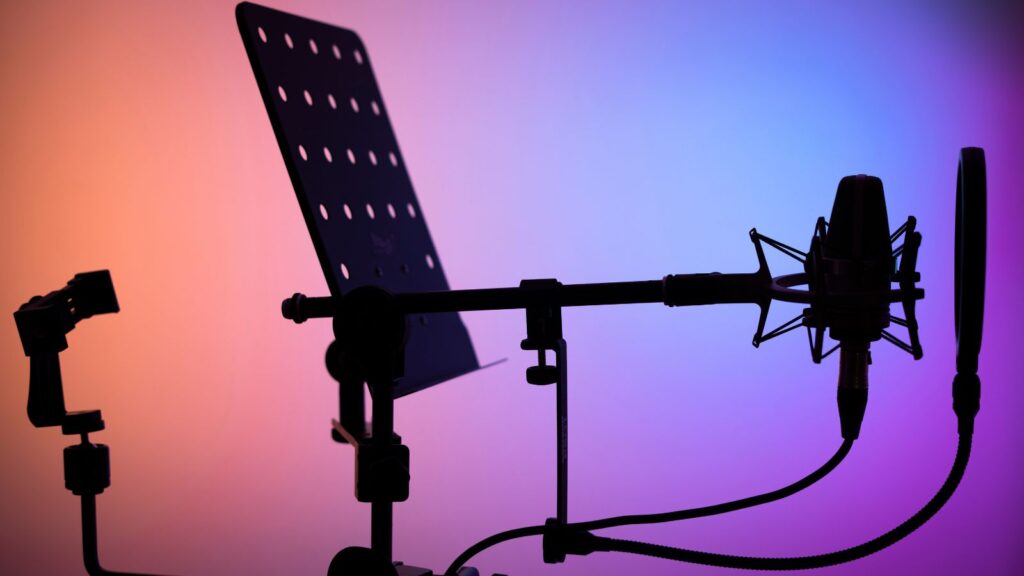The world of voiceover work is changing quickly, and artificial intelligence (AI) is a big reason why.
From audiobooks to advertisements, voiceovers are everywhere. In the past, companies had to hire human voice actors to record lines. Now, thanks to AI, that is no longer always the case.
This article explores how AI is shaping the future of voiceover work. We’ll look at what AI voiceovers are, how they work, and what this change means for businesses and voice actors. Read on.
What Are AI Voiceovers?
AI voiceovers use advanced software that can read and speak text out loud using a synthetic voice. These voices sound natural and human-like, thanks to deep learning and neural networks. Some are so realistic that it’s hard to tell if you’re listening to a human or a computer.
AI voiceover tools let users type in their script, choose a voice, and generate a recording in seconds. This process skips the need for microphones, sound booths, and hours of recording time.
The Technologies Behind AI Voices
AI voiceovers may sound like magic, but there’s real science and engineering behind them. Several cutting-edge technologies work together to turn written text into lifelike spoken words. These systems have developed rapidly in recent years, giving us voices that are more realistic, expressive, and customizable than ever before.
Let’s break down the key technologies that power AI-generated voiceovers:
Text-to-Speech (TTS)
Text-to-Speech is the core technology that allows AI to “read” written content aloud. TTS systems take input text and convert it into audio output using a synthetic voice.
Older TTS engines sounded robotic and flat, with little variation in tone or pace. But modern TTS systems-especially those powered by deep learning-are much more natural and expressive. They can now pause at the right moments, adjust pitch, and even express emotion to a certain extent.
Deep Learning and Neural Networks
Deep learning is a type of machine learning that uses layers of algorithms to analyze and learn from data. In the context of voice generation, deep learning models study thousands of hours of human speech to learn how we talk-how our voices change when we ask a question, show excitement, or express sadness.
Natural Language Processing (NLP)
For AI to speak like a human, it needs to understand language, not just pronounce it. That’s where Natural Language Processing (NLP) comes in. NLP helps AI read text the way humans do, by interpreting context, grammar, punctuation, and emotion.
Voice Cloning and Speaker Adaptation
Voice cloning is one of the most exciting and controversial technologies in AI voice generation. It allows the system to replicate a specific person’s voice using only a few minutes of their speech as training data.
Speech Synthesis with Generative AI
Generative AI models, like WaveNet and VALL-E, are pushing speech synthesis to new levels. Developed by companies like DeepMind and Microsoft, these systems use extremely detailed data to generate human-like voices that capture the rhythm, pitch, and breathing patterns of natural speech.
Industries Already Using AI Voiceovers
AI voiceover work is being used in many fields. Here are some examples:
Advertising and Marketing
In the fast-paced world of marketing, timing is everything. Businesses are using AI-generated voices to quickly create voiceovers for commercials, promotional videos, and social media ads. AI allows marketers to test different tones, accents, and styles without needing to hire multiple voice actors or book studio time.
Audiobooks and Podcasts
Narrating books and podcasts used to take hours of recording. Now, AI can generate a full audiobook with natural pacing and emotion.
E-learning and Training
AI voiceover tools are now capable of narrating entire audiobooks with lifelike quality. This is a game-changer for authors and publishers who want to release audio versions of their work quickly and affordably. Some platforms even allow authors to choose from a library of voices and tones to match their book’s mood and genre.
Customer Service and Virtual Assistants
Online learning platforms rely heavily on voice narration to make lessons more engaging. AI voiceovers offer a cost-effective and scalable way to produce training materials for schools, universities, and companies.
Course creators can easily update a module by retyping a script and generating a new voiceover, saving time and effort.
Video Games and Animation
AI voice technology powers many automated customer service systems, including voice-based chatbots, phone support lines, and smart assistants like Alexa or Google Assistant.
Businesses use AI voiceovers to greet callers, provide instructions, and guide users through self-service options.
How Voice Actors Can Adapt
With the rise of AI in the voiceover industry, many voice actors may feel uncertain about their future. However, this new technology doesn’t have to be a threat-it can be an opportunity. Voice actors who embrace change and adapt can stay competitive and even thrive. Here’s how:
Use AI as a Tool, Not a Rival
Rather than seeing AI as competition, voice actors can use it to enhance their workflow. AI voice tools can help generate quick drafts or placeholders for clients during the creative process. For instance, if a client wants to hear how a script might sound before hiring a human actor, you can use AI to produce a demo.

Offer What AI Can’t: Real Human Emotion
Even the best AI voice generators lack the full range of human expression. They can mimic tone, but they struggle with nuance. A human actor brings subtle inflections, lived experience, and genuine emotion that resonates with listeners on a deeper level.
Learn and Use AI Voice Tools
Voice actors who understand AI tools can use them to stay ahead in the industry. Learning how to work with voice generator software opens up new services to offer clients. For example, you can try this to create quick samples for your clients or build voice packs for video games, mobile apps, or e-learning content.
Develop a Strong Personal Brand
In a world where AI-generated voices can be found everywhere, your brand becomes even more valuable. Clients and fans want to connect with real people, not just polished output. Voice actors who build a distinct identity and online presence can rise above the digital noise.
Embracing the AI Voiceover Revolution
AI is shaping the future of voiceover work. It offers speed, cost savings, and endless creative options. While some may fear the change, many are already utilizing AI voiceover tools to create more effective content more quickly. Embrace the change, try out new tools, and see how AI can support your voiceover goals.


